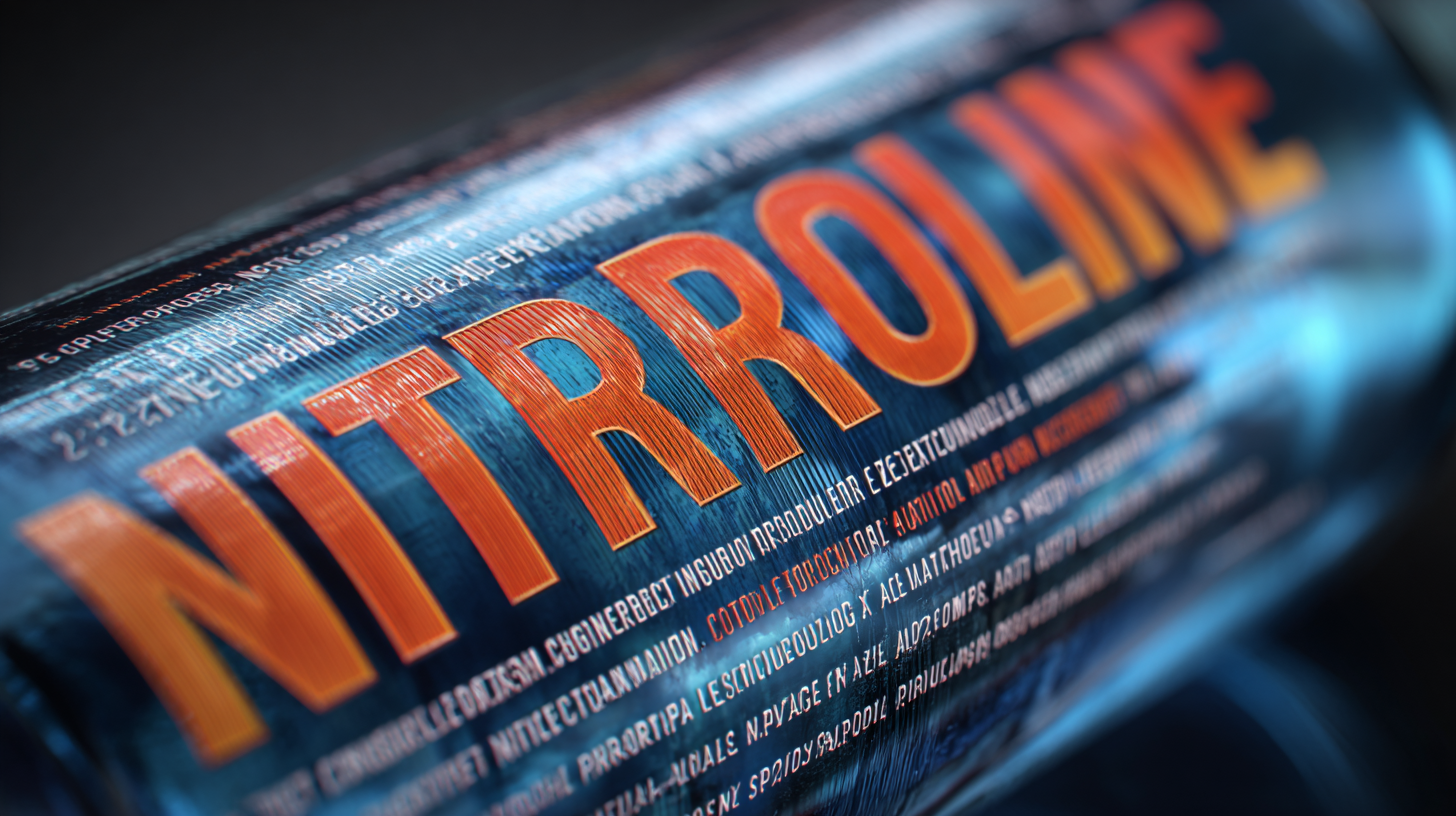Leave Your Message
In recent years, there has been a growing interest in Nitroxoline as a versatile therapeutic agent, particularly due to its effective antibacterial properties. According to a report by the World Health Organization, urinary tract infections (UTIs) account for approximately 150 million cases annually worldwide, underscoring the need for effective treatment options. Nitroxoline, with its history of use dating back to the 1960s, is gaining renewed attention for its unique ability to combat multidrug-resistant bacterial strains. For healthcare professionals and patients alike, understanding the Nitroxoline Prescription Information is crucial, as recent studies highlight its potential applications beyond treating UTIs, including its role in managing certain types of infections and even potential anticancer effects. This blog aims to unravel the multifaceted benefits of Nitroxoline, providing insights into its clinical applications, safety profile, and future potential in modern medicine.

Nitroxoline, an antibacterial drug originally devised for the treatment of urinary tract infections (UTIs), has gained attention in various medical fields due to its broad spectrum of activity. Its mechanism involves inhibiting the growth of bacterial cells, effectively treating infections caused by common pathogens like Escherichia coli and Klebsiella pneumoniae. A report from the World Health Organization outlines that UTIs affect millions globally, with around 150 million cases reported annually, indicating a persistent need for effective treatment options such as Nitroxoline.
Beyond its primary application for UTIs, Nitroxoline has been recognized for its potential use in other conditions, including as an adjunct treatment for certain types of cancers and for its antiviral properties. Recent studies published in journals like the European Journal of Pharmacology highlight Nitroxoline's capacity to enhance the efficacy of anticancer drugs, suggesting it may inhibit tumor cell proliferation. Notably, a clinical trial indicated that Nitroxoline could exhibit activity against some viral infections, positioning it as a versatile therapeutic agent in an era where antibiotic resistance is a growing threat. The multifaceted applications of Nitroxoline demonstrate its significance in contemporary medicine, inviting further research into its full potential for patient care.
| Dimension | Description |
|---|---|
| Chemical Name | Nitroxoline |
| Type | Antimicrobial Agent |
| Primary Use | Treatment of Urinary Tract Infections (UTIs) |
| Other Applications | Potential use in bladder cancer treatment, antibiotic-resistant infections |
| Mechanism of Action | Inhibits bacterial enzyme activity, disrupts metabolic functions |
| Dosage Forms | Tablets, Oral solution |
| Side Effects | Nausea, vomiting, headache, rash |
| Contraindications | Hypersensitivity to nitroxoline |
| FDA Approval Status | Approved for use, but in specific markets |
 Nitroxoline, a synthetic antimicrobial agent, operates through a multifaceted mechanism to combat bacterial infections. Primarily, it disrupts the synthesis of bacterial DNA by chelating divalent metal ions, such as magnesium and zinc, which are crucial for the functioning of various enzymes. This interference not only hampers the growth and reproduction of bacteria but also enhances the efficacy of other antibiotics, making nitroxoline a valuable ally in the treatment of urinary tract infections (UTIs) and other bacterial diseases.
Nitroxoline, a synthetic antimicrobial agent, operates through a multifaceted mechanism to combat bacterial infections. Primarily, it disrupts the synthesis of bacterial DNA by chelating divalent metal ions, such as magnesium and zinc, which are crucial for the functioning of various enzymes. This interference not only hampers the growth and reproduction of bacteria but also enhances the efficacy of other antibiotics, making nitroxoline a valuable ally in the treatment of urinary tract infections (UTIs) and other bacterial diseases.
In addition to its antimicrobial properties, nitroxoline exerts anti-inflammatory effects, further contributing to its therapeutic potential. By modulating the immune response, it aids in reducing the inflammation associated with infections. This dual action not only addresses the immediate bacterial threat but also promotes healing in the affected tissues. As research continues to unveil the broad applications of nitroxoline, understanding its intricate mechanisms can help healthcare professionals utilize this compound more effectively for a range of infectious diseases.
Nitroxoline, a synthetic antimicrobial agent, has garnered attention for its diverse clinical applications in modern medicine. Initially developed as a treatment for urinary tract infections (UTIs), recent studies have revealed its potential effectiveness against a broader range of pathogens, including gram-positive and gram-negative bacteria. According to a report by the World Health Organization, urinary tract infections are among the most common bacterial infections, affecting approximately 150 million people worldwide each year. Nitroxoline is particularly noted for its ability to inhibit biofilm formation, which is critical in the treatment of persistent infections associated with catheters and other medical devices.
Beyond its role in treating UTIs, nitroxoline has shown promise in addressing multidrug-resistant infections. A study published in the Journal of Antimicrobial Chemotherapy highlighted the efficacy of nitroxoline in combating strains of E. coli and other organisms resistant to conventional antibiotics. Furthermore, ongoing research suggests potential applications in oncology, where nitroxoline may enhance the effectiveness of certain chemotherapeutic agents and reduce tumor proliferation. These findings underline the versatility of nitroxoline as a therapeutic option, necessitating further investigation into its full spectrum of clinical benefits.
Nitroxoline, an antibiotic primarily used for urinary tract infections (UTIs), offers several potential benefits, but users must also consider possible side effects. Clinical studies show that nitroxoline effectively reduces UTI recurrence rates, with a notable efficacy of around 60% to 80% in preventing relapses when combined with standard therapies. This protocol appears particularly beneficial for patients who experience recurrent infections, providing a viable alternative to more traditional antibiotics.
However, like any medication, nitroxoline is not without its risks. Some users report side effects, including gastrointestinal issues such as nausea and diarrhea, affecting approximately 10-20% of patients according to pharmacovigilance studies. Moreover, there is a concern regarding the potential for allergic reactions, which, while rare, necessitate prompt medical attention. It’s vital that individuals considering nitroxoline evaluate their medical history and discuss these factors with healthcare professionals to ensure a balanced understanding of its potential benefits and risks.
 Incorporating Nitroxoline into your treatment plan can be a game-changer for managing various urinary tract infections and other bacterial conditions. Recent studies indicate that Nitroxoline, known for its broad-spectrum antibacterial properties, not only assists in treating infections but also exhibits unique qualities that contribute to better patient outcomes. According to a report from the European Journal of Clinical Microbiology, Nitroxoline has shown effectiveness against a range of pathogens, making it a valuable addition to antibiotic therapies.
Incorporating Nitroxoline into your treatment plan can be a game-changer for managing various urinary tract infections and other bacterial conditions. Recent studies indicate that Nitroxoline, known for its broad-spectrum antibacterial properties, not only assists in treating infections but also exhibits unique qualities that contribute to better patient outcomes. According to a report from the European Journal of Clinical Microbiology, Nitroxoline has shown effectiveness against a range of pathogens, making it a valuable addition to antibiotic therapies.
When considering the integration of Nitroxoline, it's essential to tailor the dosage and administration route to each patient's needs. Clinical data suggest that appropriate dosing can maximize its efficacy while minimizing potential side effects. For instance, a dosage of 600 mg per day has been demonstrated as effective, with a strong safety profile. Health professionals should also educate patients on the importance of adherence to treatment schedules to ensure optimal results and reduce the risk of antibiotic resistance.
By embracing Nitroxoline in a thoughtful, informed manner, healthcare providers can enhance their treatment frameworks significantly, resulting in improved health outcomes for their patients.
